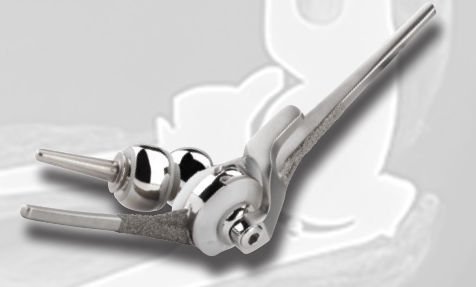Elbow prosthesis in Tunisia
When do we need it?
 With the improvement of living conditions and the general aging of the population, horizons are broadening. New frontiers unimaginable just a few years ago are collapsing. Surgery increasingly pursues the legitimate improvement of the quality of life. And the upper limbs are part of it, although they are obviously not necessary for walking. Indeed, for years the shoulder prosthesis has established itself as an effective solution to the problems of this district. Today, even the elbow prosthesis therefore enters our operating theaters as a reality. But it's not surgery for everyone. Let's see how and why such an intervention might be necessary.
With the improvement of living conditions and the general aging of the population, horizons are broadening. New frontiers unimaginable just a few years ago are collapsing. Surgery increasingly pursues the legitimate improvement of the quality of life. And the upper limbs are part of it, although they are obviously not necessary for walking. Indeed, for years the shoulder prosthesis has established itself as an effective solution to the problems of this district. Today, even the elbow prosthesis therefore enters our operating theaters as a reality. But it's not surgery for everyone. Let's see how and why such an intervention might be necessary.
What makes it necessary?
As in all joints, the only criterion that makes a prosthesis necessary is complete wear. There is no preventive surgery. Replacement by a prosthesis only becomes possible when the wear of the joint is complete and irreversible. Not before. The prosthesis is a compromise. Especially at the elbow. The elbow prosthesis is a mobile joint that allows movements without pain. It's not a normal elbow. It is a joint that allows it to be used in daily activities. Relieves the pain of bone-to-bone rubbing of a worn joint. Anyone who has a fully completed joint will benefit substantially in day-to-day life.
Who needs an elbow prosthesis?
There are different types of problems that unfortunately cause damage to the joint that requires elbow prosthesis. The first cause is osteoarthritis. In the case of the elbow, unfortunately, it is post-traumatic osteoarthritis. The elbow is actually a very delicate joint. A fracture involving the articular surface can become a nightmare. Scarring can leave joint stages so large that they completely corrode the cartilage. The other common cause of elbow wear is rheumatoid arthritis. In this case, it is a systemic immune disease that attacks the cartilage of our joints. The terminal stages of the disease can come to compromise the elbow in a very important way. The third reason can be a very large fracture in the elderly. Sometimes, indeed, as it is the case for the hip, one can choose, instead of repairing a very bad fracture (prosthetic elbow).
Operative treatment
Elbow replacement surgery is a joint replacement. Basically, the worn or broken parts of the elbow are replaced with artificial parts. As it happens in the shoulder or the hip, in the elbow too, prosthetic rods are inserted inside the bones, called rods, which are fixed by pressure or with cement and which articulate with each other. others. It is as if a hinge were introduced into the elbow which should guarantee smooth and painless movement.
Radial head elbow prosthesis
Elbow prosthesis is also used in case of radial head fractures, which can affect the head, the neck of the radius or both components.
This is the most common case of elbow fracture and can be caused by a fall onto the palm of the hand.
This fracture can be of four types: compound monofragmentary fracture, displaced monofragmentary fracture, multifragmentary fracture and fracture with dislocation of the elbow.
Types of prostheses
There are two different types of implants:
The total elbow prosthesis, which reproduces the articular surface of the elbow through the humeral component and the ulnar component, coupled together by a metallic component in polyethylene; this type of prosthesis can be with or without a hinge, depending on whether or not there is a hinge to create a mechanical connection between the two components; articulated prostheses have a high intrinsic stability and are the most used in Italy and the United States; hingeless prostheses, for their part, base their stability on capsulo-ligament reconstruction and on balancing the soft tissues;
Humeral hemiarthroplasty, which involves replacing only the distal end of the humerus with a metallic prosthesis, which must adapt to the opposing ulnar and radial surfaces.
Re-education
Following the transplant operation, the patient must follow a rehabilitation program and pay adequate attention to the use of the operated joint.
In the immediate postoperative period, the use of an elbow brace is prescribed to then decide how to position the elbow with a valve in extension or flexion and when to start treatment, especially depending on the type of operation, the technique used and skin conditions.
During the rehabilitation process, the physiotherapist guides the patient in carrying out exercises aimed at the self-assisted mobilization of the limb in the movements of flexion-extension and prono-supination.
In addition, the patient must avoid performing strenuous activities or repetitive and painful gestures with the operated limb.